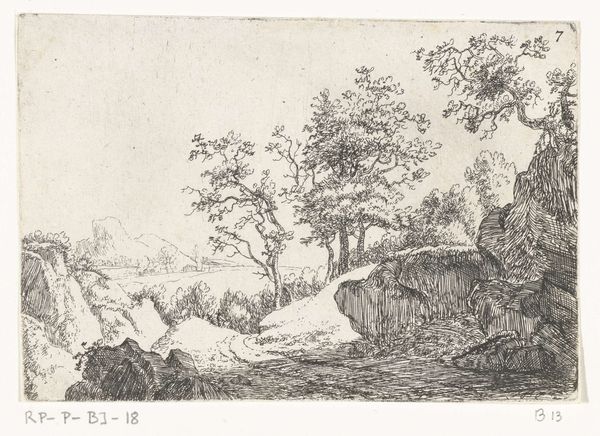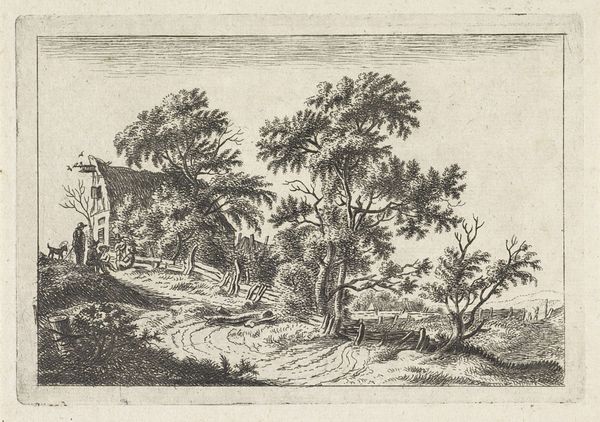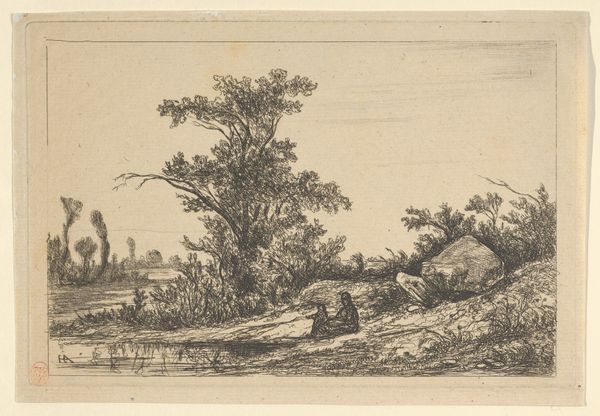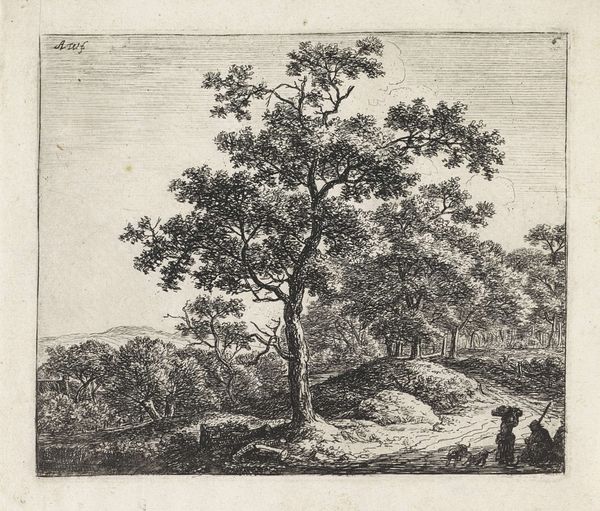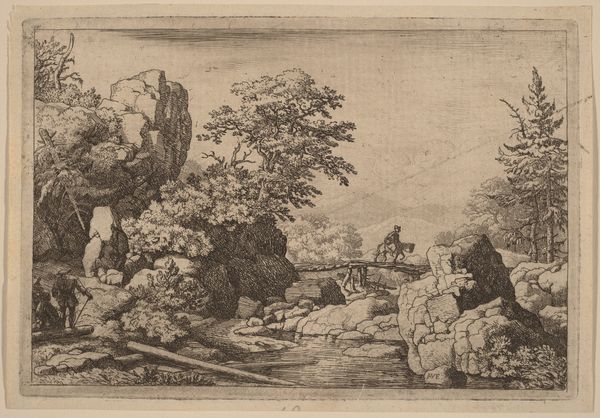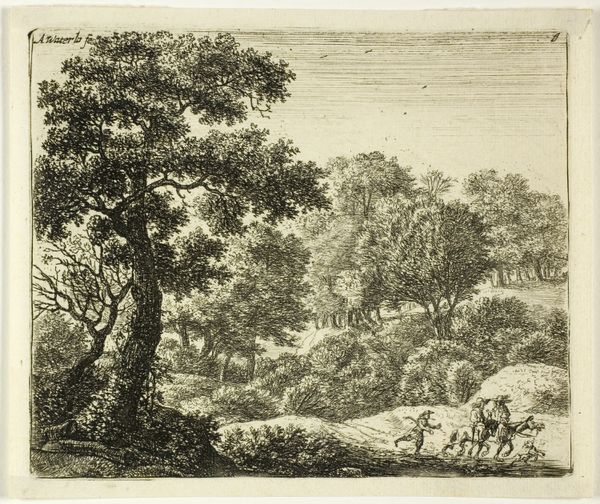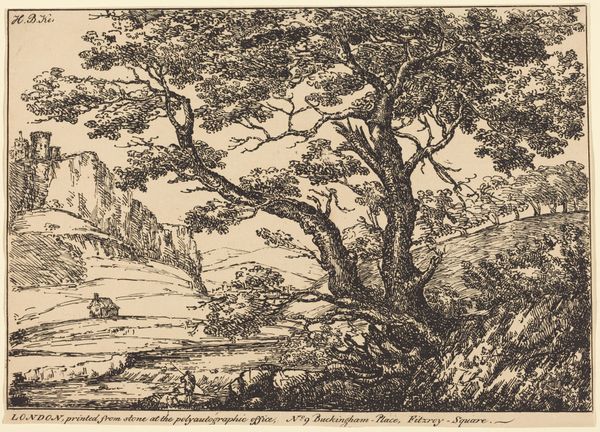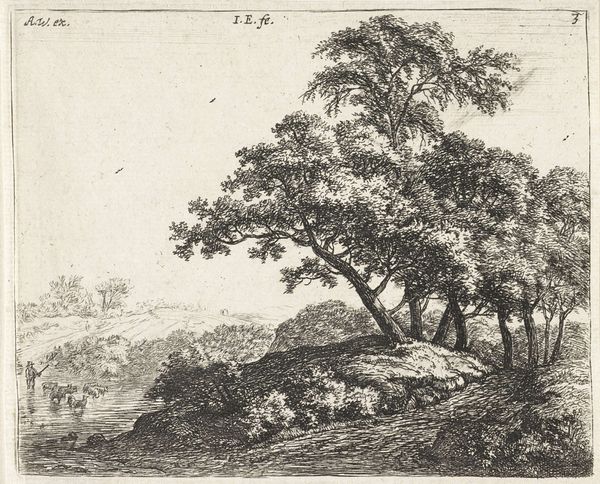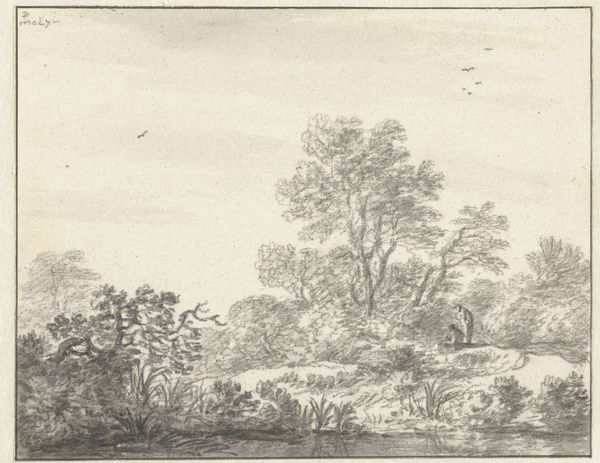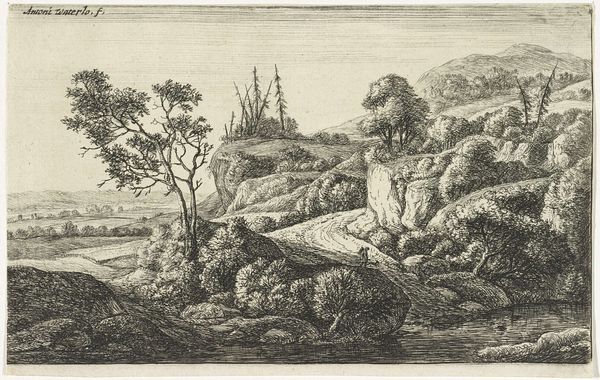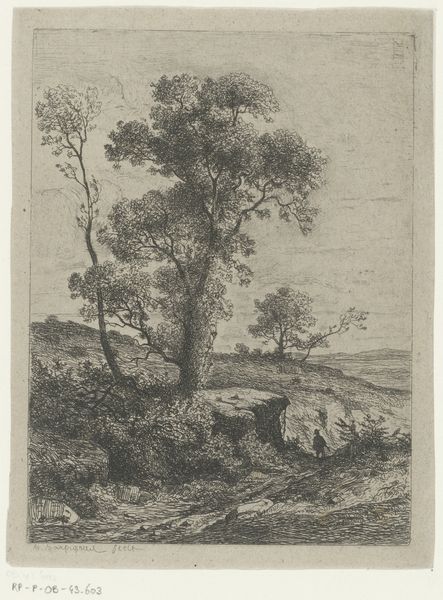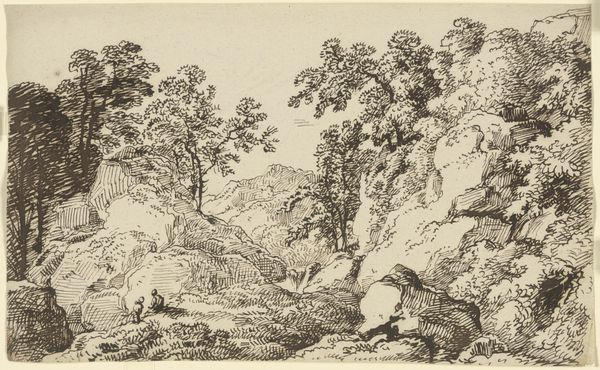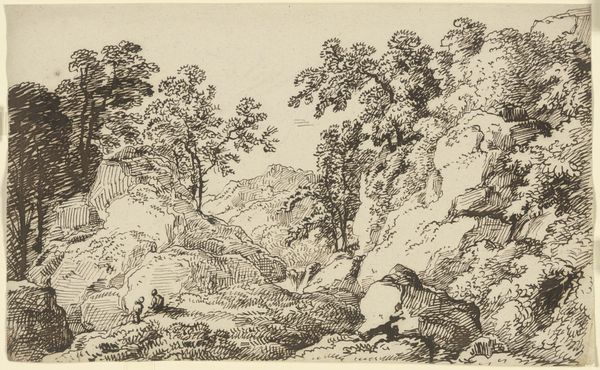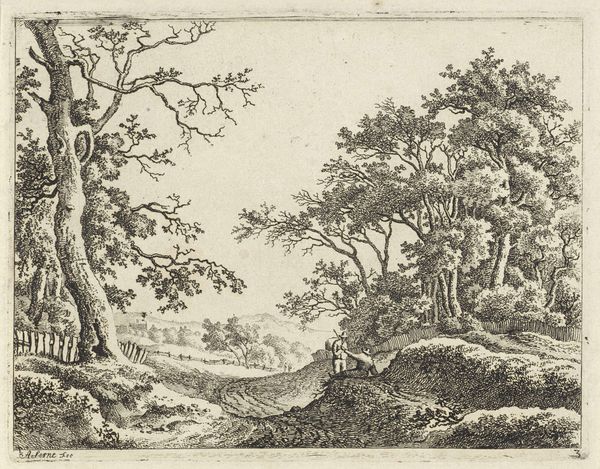
drawing, etching, ink
drawing
dutch-golden-age
etching
landscape
figuration
ink
Dimensions: height 97 mm, width 142 mm
Copyright: Rijks Museum: Open Domain
Editor: This is "Landscape with Rider," likely created sometime between 1624 and 1670 by Jan van Aken. It’s an etching in ink, and there’s a somber mood about it, a stillness perhaps only broken by the rider. What do you see in this piece, and how do you think we might approach it from a more contemporary perspective? Curator: What I see here is a landscape imbued with the social and political anxieties of its time. These seemingly pastoral scenes often served as allegories. The lone rider, the modest dwelling, the dominating landscape – it speaks to notions of land ownership, of power structures embedded within the Dutch Golden Age. Editor: So you're saying this seemingly simple scene might be commenting on the unequal distribution of resources and power? Curator: Exactly. We need to remember the immense wealth concentrated in the hands of a few during this period, often gained through exploitative colonial practices. How might this picturesque scene actually obscure the lived experiences of those marginalized by these power dynamics? Editor: It makes you wonder about the unseen laborers, doesn't it? The people who wouldn't be represented in such a 'refined' landscape. Curator: Precisely. Consider how the "landscape" genre itself served to legitimize a specific worldview. The artist, perhaps unknowingly, participates in constructing and reinforcing these hierarchies through their choices of subject and composition. Who gets to be *in* the landscape, and what does their presence signify? Editor: So, even without overt political symbolism, the artwork is making a statement about social inequalities? Curator: It's less about deliberate messaging and more about excavating the implicit ideologies embedded within artistic traditions. We can ask, whose narrative is being centered, and whose is being erased? This changes our perspective on these "classic" artworks, giving them new agency today. Editor: I see what you mean! By looking at the context and unspoken elements, we can see a richer, and potentially more challenging, side to art history. Thanks!
Comments
No comments
Be the first to comment and join the conversation on the ultimate creative platform.
